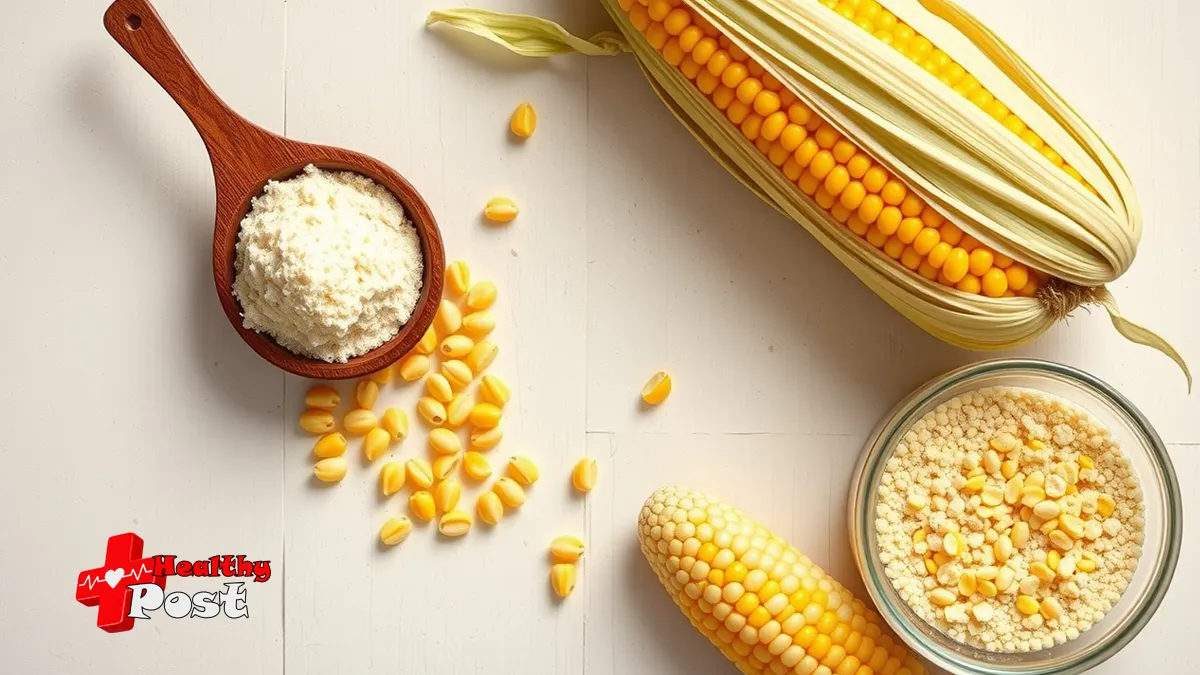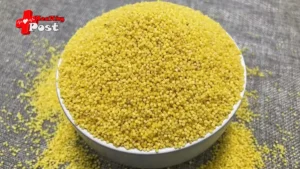
What is corn flour and it’s health benefits
If you’ve ever wondered what corn flour is and how to use it, you’re not alone. Corn flour is a finely ground powder made from whole dried corn kernels. It’s naturally gluten-free, mild in flavor, and incredibly versatile—great for baking, thickening, and adding a sunny golden color to your favorite recipes. Whether you’re cooking for a family with dietary needs or just curious about new pantry staples, corn flour can be a supportive, go-to ingredient that makes everyday meals feel a little easier.
Quick Comparison: Corn Flour vs. Similar Ingredients
| Ingredient | Made From | Texture | Common Uses | Gluten-Free |
|---|---|---|---|---|
| Corn flour | Whole corn kernels | Very fine | Baking, batters, tortillas, thickening | Yes |
| Cornstarch | Starchy part of corn | Silky powder | Thickening sauces, puddings | Yes |
| Cornmeal | Whole corn kernels | Coarse/gritty | Polenta, cornbread, breading | Yes |
| Masa harina | Nixtamalized corn | Fine | Tortillas, tamales | Yes |
Tip: Corn flour and cornstarch are not the same. Cornstarch is pure starch and best for thickening clear sauces; corn flour includes the whole kernel and adds body, color, and mild corn flavor.
5 Benefits of Using Corn Flour
1) Naturally gluten-free
Corn flour is a welcome option for those avoiding wheat. You can:
- Blend it with gluten-free flour mixes for pancakes or muffins
- Use it to lightly coat fish or tofu before pan-frying for a crisp finish
Real-life example: Swap 25% of your usual gluten-free flour blend with corn flour to boost color and tenderness in cornbread.
2) Versatile thickener with gentle flavor
Unlike cornstarch, corn flour adds a subtle corn note and a bit of creaminess.
- Whisk into chowders or veggie soups
- Use in gravies where you want a slightly richer body
3) Enhances texture and color in baking
Corn flour gives baked goods a soft crumb and golden hue.
- Great in muffins, waffles, and quick breads
- Try a 1:3 ratio of corn flour to all-purpose or GF flour for balanced structure
4) Budget-friendly and easy to find
It’s an affordable pantry staple in most grocery stores and international markets, often near cornmeal and masa harina.
5) Kid- and crowd-friendly
Its mild flavor works for picky eaters and blends smoothly into familiar meals like pancakes, tortillas, and lightly crisped chicken tenders.
How to Use Corn Flour (Simple Ideas)
- Pancakes: Replace 20–30% of your flour with corn flour for a tender, golden stack.
- Crispy coating: Mix corn flour with spices for oven-baked chicken or cauliflower.
- Everyday thickener: Stir a tablespoon into soups near the end of cooking to slightly thicken without overpowering the flavor.
Storage and Substitutions
- Store in an airtight container in a cool, dark place for up to 6–12 months.
- Need a substitute? For thickening, use cornstarch. For baking, combine cornmeal (for texture) with a fine gluten-free flour (for structure). Masa harina can substitute in some tortillas, but it has a distinct flavor due to nixtamalization.
The effects and benefits of cooked corn flour
Cooked cornmeal is made from corn, and its main functions are to supplement the body with nutrients, promote gastrointestinal motility, and increase satiety. Although cooked cornmeal has many health benefits, intake should be controlled; consuming too much at once can cause discomfort such as bloating, abdominal pain, and diarrhea, and may affect the absorption of other nutrients. Cooked cornmeal contains some sugar, and excessive consumption can raise blood sugar levels, so people with high blood sugar should consume it with caution.
1. Nutritional Supplement: Cooked cornmeal contains carbohydrates, dietary fiber , vitamins , and various minerals such as sodium and potassium . Moderate consumption can supplement essential nutrients and is beneficial to health.
2. Accelerates gastrointestinal motility: Cooked cornmeal contains a large amount of dietary fiber, which can promote gastrointestinal motility to a certain extent. For people with poor gastrointestinal digestion, moderate consumption can help promote digestion.
3. Increases satiety: The dietary fiber in cooked cornmeal can absorb water, creating a feeling of fullness after consumption. For obese individuals or those trying to lose weight, moderate consumption can reduce the intake of other foods.
The effects of corn flour on coronary heart disease
Corn flour has the following effects on coronary heart disease:
1. Lowering blood pressure and reducing lipids: Long-term consumption of corn flour can make blood pressure easier to control, dilate capillaries, reduce blood viscosity, improve microcirculation, soften and protect blood vessels, lower blood lipids and cholesterol, effectively improve myocardial ischemia, and improve cardiovascular and cerebrovascular circulation.
2. Weight loss: Cornmeal is rich in dietary fiber, which easily creates a feeling of fullness and helps absorb excess fat for excretion. It is used to treat diseases such as arteriosclerosis , coronary heart disease, hypertension, fatty liver, and obesity .
The effects of cornstarch on coronary heart disease are mainly due to the two aspects mentioned above. Cornstarch is suitable for patients with various constitutions, including healthy individuals, those with qi stagnation , qi deficiency, damp-heat, phlegm-dampness and blood stasis. It can be consumed long-term without any contraindications. As cornstarch is one of the six grains, it is rich in dietary fiber and trace elements, which can have a strong effect on atherosclerosis . Therefore, it has a certain preventive and therapeutic effect on coronary heart disease.


2 thoughts on “What is corn flour and it’s health benefits”